All about crushed stone beds
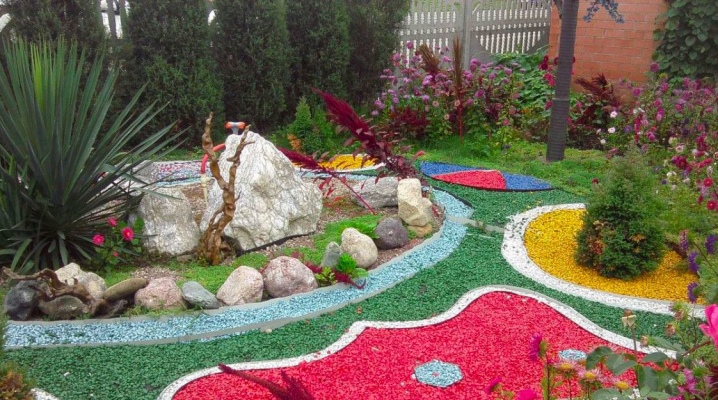
Knowing everything about crushed stone beds is useful for both the experienced and the novice gardener. Making them with your own hands with decorative colored gravel can be really exciting. But we still need to figure out how to make a dump with white rubble, what else is the design of flower beds in the country, and how to properly care for them.
Peculiarities
Crushed stone beds can be arranged in a wide variety of locations, and the possibilities for creating them are almost endless. Wherein there is little that can be compared to the decorative effect of well-chosen and well-designed gravel. Even the most experienced designers often choose this particular design option. You can confidently do without grass, which will further simplify your daily care - the best option for those who just want to be in the country, relax there without unnecessary worries. Of the advantages, it can be noted:
- improvement of micro-ventilation of the root system of plants;
- suitability for ornamental non-flowering shrubs;
- the possibility of manifestation of the original idea by varying the color;
- affordability;
- the ability to lay without assistance.
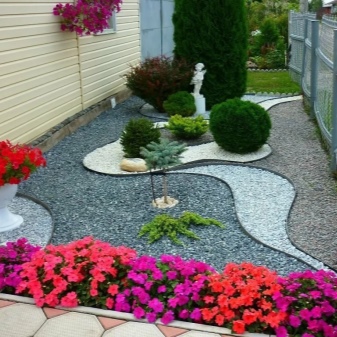
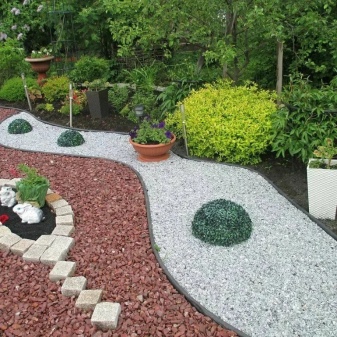
The disadvantages include:
- inconvenience when moving barefoot, and partly in open summer shoes;
- mixing dry grass, leaves and other fine litter with stones (it is very difficult to separate them);
- the likelihood of removing the gravel layer in winter along with snow and ice;
- the probability of mixing the laid out rock with the ground if a mole settles on the site.
Crushed stone selection
But if it is decided to firmly use crushed stone for landscape design of flower beds, then you will have to carefully select it. Natural stone can be of different shades. Decorating the site with both white and colored materials is quite promising. The coloration depends on what the original rock was. So, white tone has a material that emerged from:
- marble;
- limestone;
- quartz.
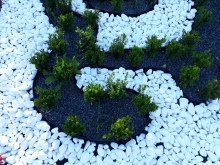


But you need to understand that a completely pure white color is more the exception than the rule. You will have to pay a lot for it. And there is no special need - after all, the shades that dilute the monolithic whiteness are sometimes very interesting. Crushed stone of gray color, which is divided into a lot of shades, is very widely represented on the market. Basically, they are dominated by:
- gabbro;
- imitation of granite;
- basalt;
- limestone color.
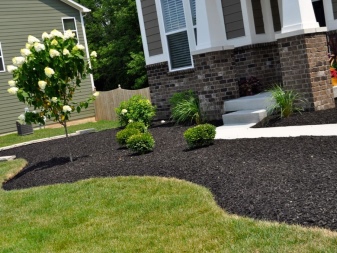
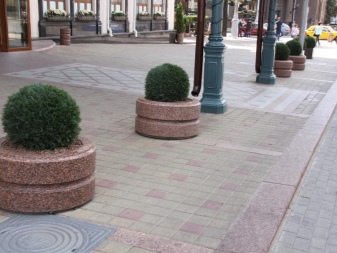

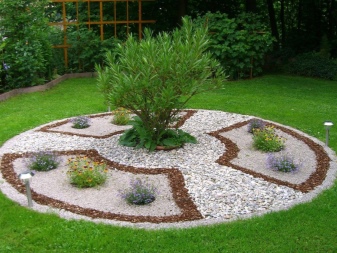
The overwhelming majority of decorators prefer imitation of granite. She looks noble and sophisticated in any environment. This material is extremely durable and excellent cold resistance. Gabbro is also in demand, an interesting effect of this breed is the ability to change color under different weather conditions. Lime and marble types of gray crushed stone can combine a variety of shades.
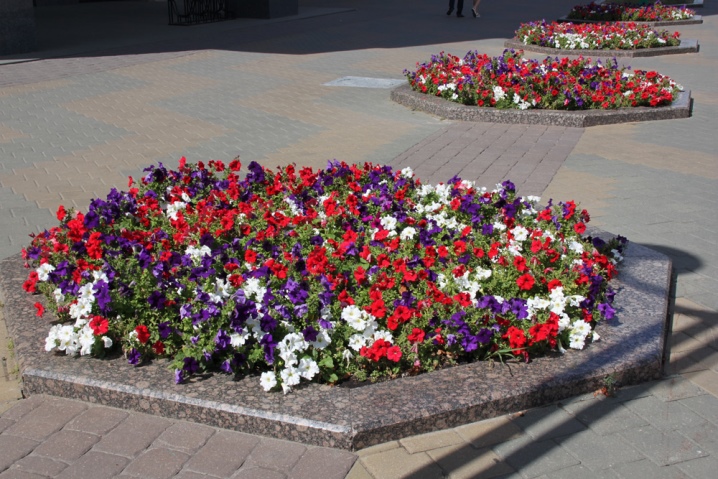
The dark stone is mainly represented by serpentinite and diorite. Serpentinite is usually greenish, but can change color in the rain. Diorite crushed stone with a spotted effect is highly valued. Granite stone can also have a red or even a specific brick sheen. Sandstone and shale mass is colored in yellow, brown or olive tones, sometimes in various combinations.
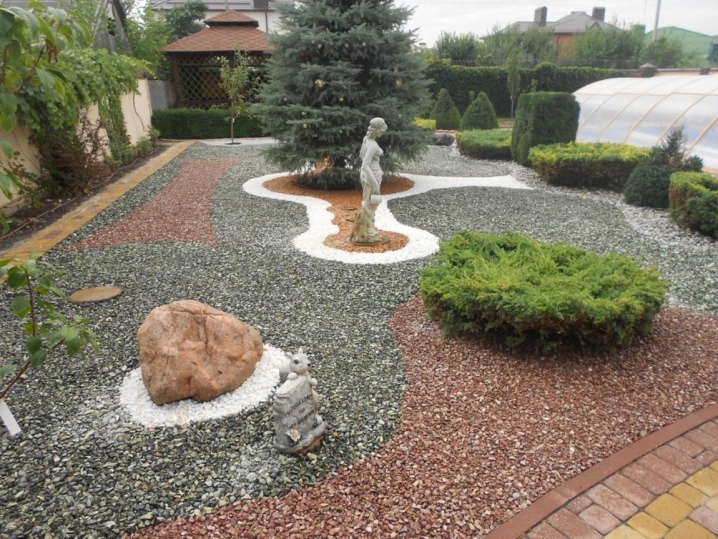
The size of the backfill is also important. So, small pebbles (no more than 20 mm in cross section) look great near plants, especially flowers. The middle fraction is valued for its ability to stably stay on the surface of the earth and not mix with it. Fences are mainly built from large rubble, which restrain the erosion of the flower bed and its spread by the wind. An alternative application is the creation of compositions in the "oriental" spirit.
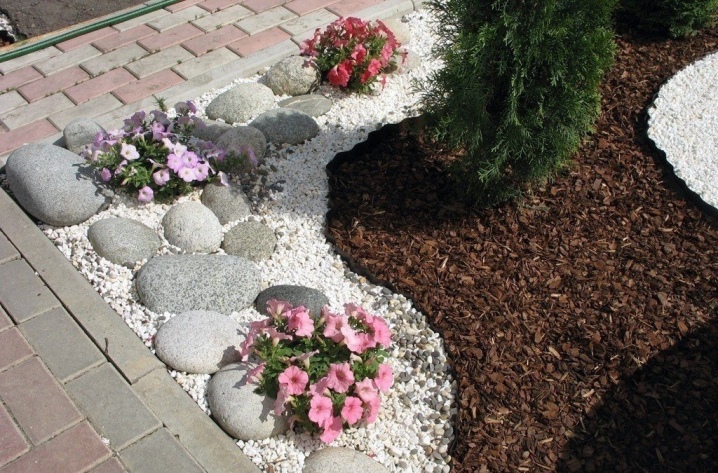
How to paint the material for decoration?
Even if all the variety of natural rubble is not bright enough, it doesn’t matter. Do-it-yourself painting is quite possible.
We just have to take into account that not every stone "accepts" the pigments used equally well. Usually, water-based or acrylic-based building paints are applied.
The technology involves the use of a concrete mixer - without it, it is impossible to paint a lot of stone in a reasonable time for technical reasons.
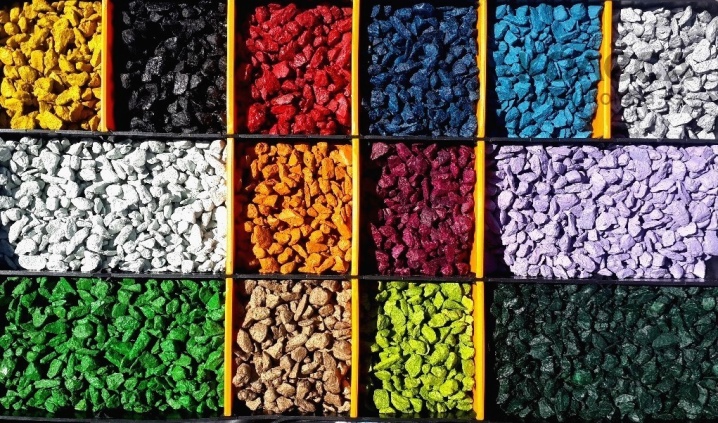
How to do it yourself?
The process of making flower beds includes several stages.
Preparation
It is highly advisable to carry out the procedure before planting the plants in the designated place. Having chosen a site for dumping in the country or in front of the house, you need to surround it with a rope stretched on stakes, or in another convenient way to show the contour so as not to make a mistake. Important: in some cases, a flowerbed with an irregular geometry will look more interesting and extraordinary than a simple direct composition. At the selected point, they carefully remove all fertile land at least 0.2 m deep.

Additionally, before laying, you also need:
- remove absolutely all roots; moisten the earth;
- leave it for 6-7 days;
- newly hatched shoots and roots of weeds - ruthlessly destroy;
- dig up the selected place;
- pour out expanded clay or coarse sand to ensure good drainage;
- compact the site with a garden roller;
- lay geotextiles;
- make 1 hole for every 3 sq. m for the most efficient drainage of water.
Backfill
It is possible to properly fill and lay gravel only after planting the plants. They fill the remaining space. Next, lay the second level of geotextile. A decorative layer of the rock is poured over it.
Recommendation: for a greater guarantee of success, the stone is thoroughly washed in water before being placed on the flower bed, this eliminates the slightest clogging with unnecessary particles that may initially be contained in it.
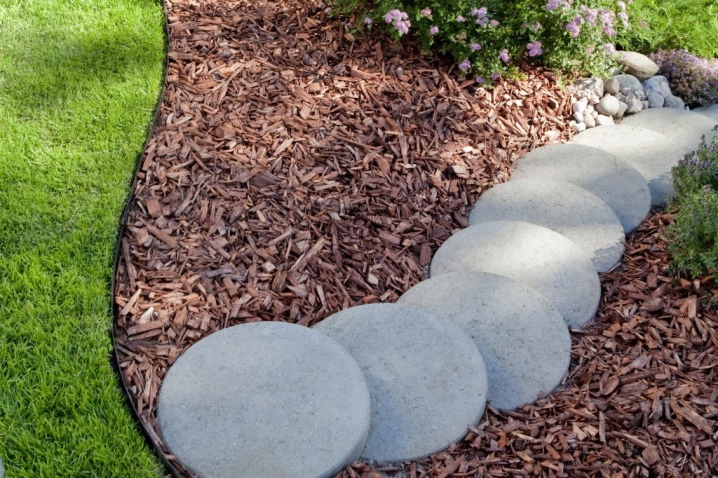
Planting flowers
Planting a wide variety of plants is quite acceptable - after all, crushed stone and gravel have excellent compatibility with them. Be sure to take into account, however, the general design of the site and the chosen decorative style. On a rocky substrate will look very nice:
- various breeds of yucca;
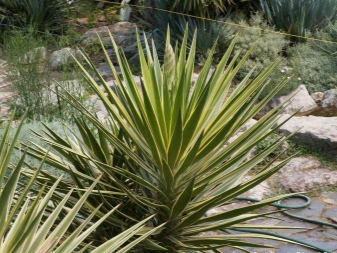
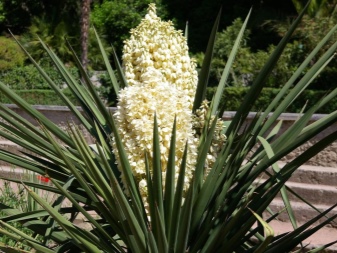
- rogersia;
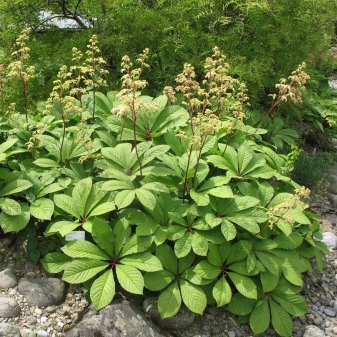

- cypress;

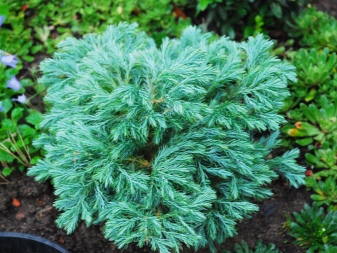
- boxwood;
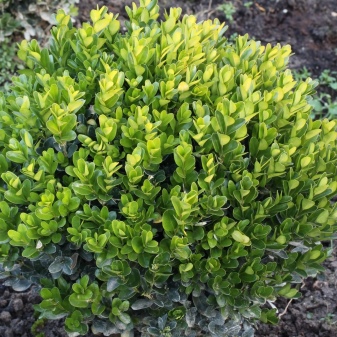

- yew.
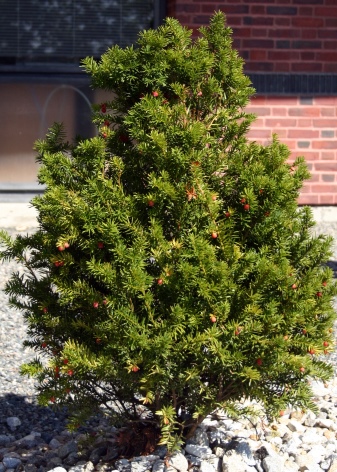
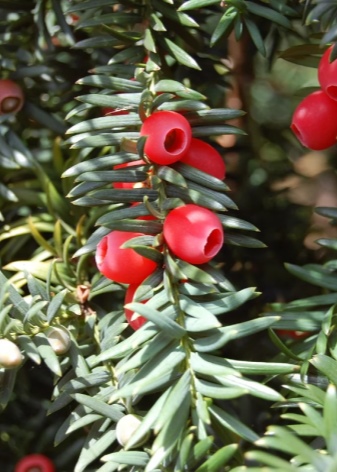
Of the flowers themselves, they are often used:
- sedum (aka sedum);

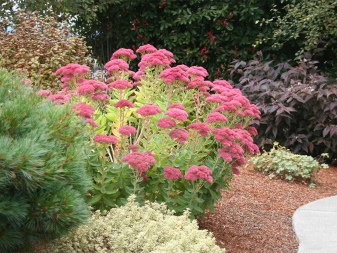
- stone rose;
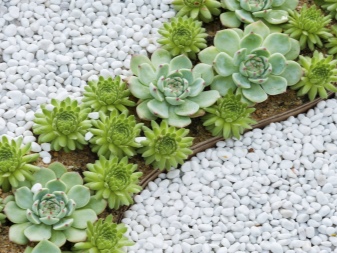
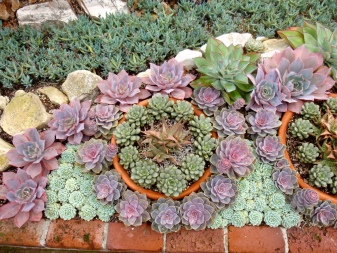
- seaside army;
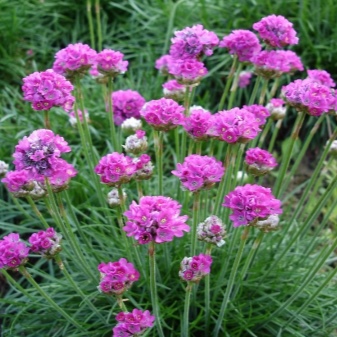
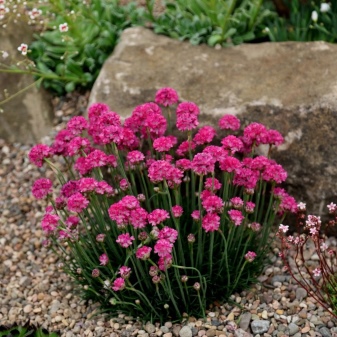
- badan;
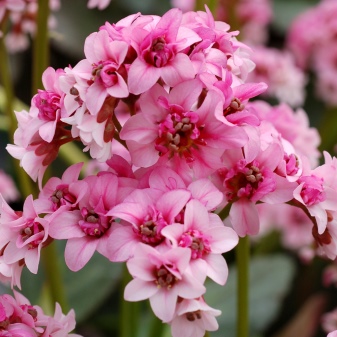

- thyme;
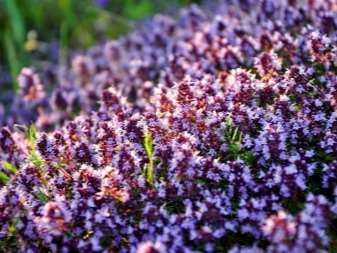
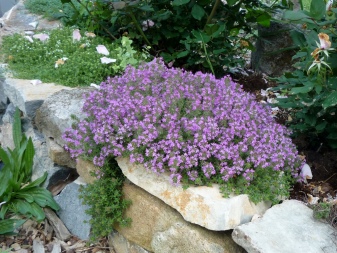
- saxifrage;
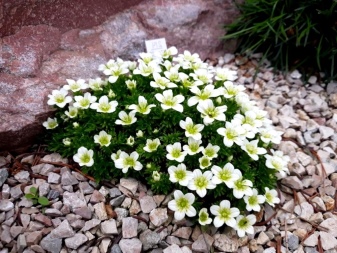
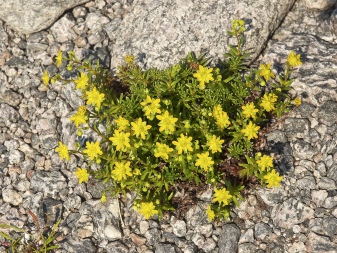
- splinter.

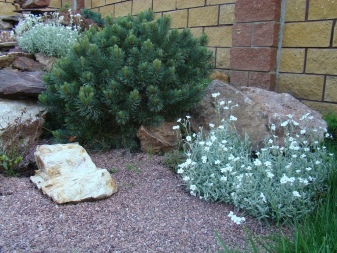
Some planting guidelines will be useful to everyone.
So, sedum is advised to be planted in the last decade of May, making sure that there is no risk of frost return. In the bright sun, this culture will feel uncomfortable. A stone rose, on the other hand, works best with excessive insolation. Between the sockets, gaps of strictly 0.15 m are maintained.
Thyme also belongs to light-loving crops. The most effective planting method is using seeds. The chickweed should be planted on a very fertile or additionally improved (in about 30 days) soil with organic fertilizers. Disembarkation intervals 0.25-0.3 m.
But it is not only the space of the flower bed itself that is important: it is quite logical to make a flower garden with paths around from the same rubble in order to simplify your task and arrange the space as harmoniously as possible. Granite gravel is preferred for walkways. The coarse material is usually placed in the lower tier, and the fine fraction is placed on top. As a result, the base will be strong enough and the surface will look very interesting.But it is not recommended to use the gravel type of rock - it has sharp edges, which are inconvenient and even dangerous when walking.
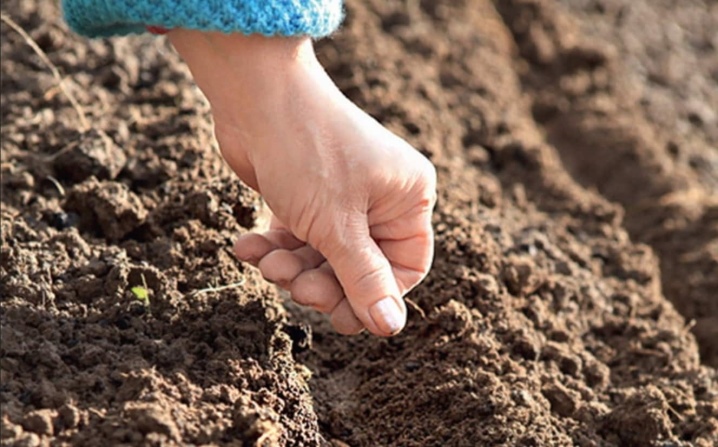
Shale and limestone rubble can also decorate the path or area in front of the house. But one must understand that he is unable to withstand significant mechanical stress. The use of pebbles (river stone) is also an attractive solution. It is not necessary, although highly desirable, to equip the track with a curb. The use of stones painted in different colors is encouraged.
How to make a flower bed from rubble with your own hands, see the video.
Care Tips
Even backfilling the stone does not mean that you can ignore the need for weeding. This procedure, however, will be required less often, but it will have to be done as carefully as possible. Occasionally, crushed stone or gravel needs to be re-leveled with a hand rake. It is not wise to use mechanical, motorized devices. Systematic irrigation is required, as the need for plants arises, as well as annual feeding with liquid fertilizers, the proportion of dilution in water specified by the manufacturer cannot be violated.
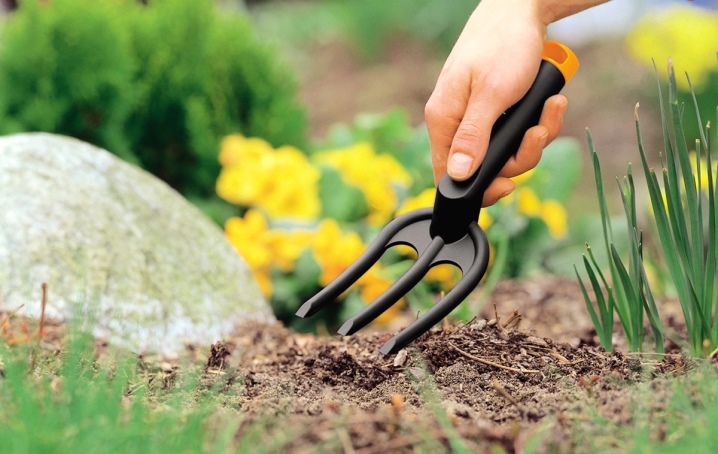
Design examples
Flower beds can be very diverse. The examples presented eloquently speak about this.
- The photo shows how great a crushed stone flower bed can look. Multi-colored fragments, curly lines and a general unusual shape look bold and catchy.

- The combination of white and dark gray with a blue tint of crushed stone is also a good choice. It is in perfect harmony with the curb and the classic green lawn.
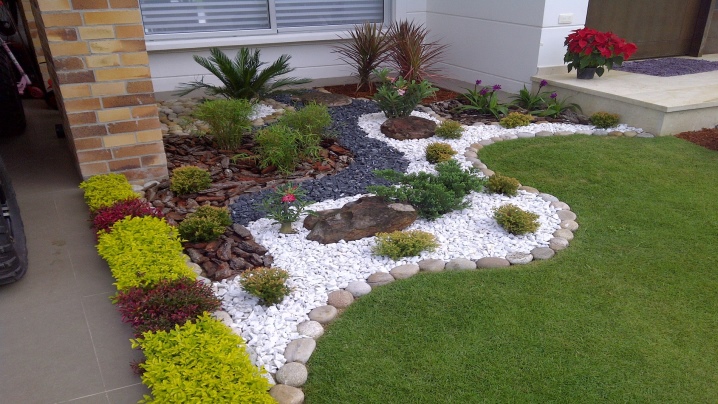
- And this is how a site of rich red crushed stone with non-flowering plants can be organized.
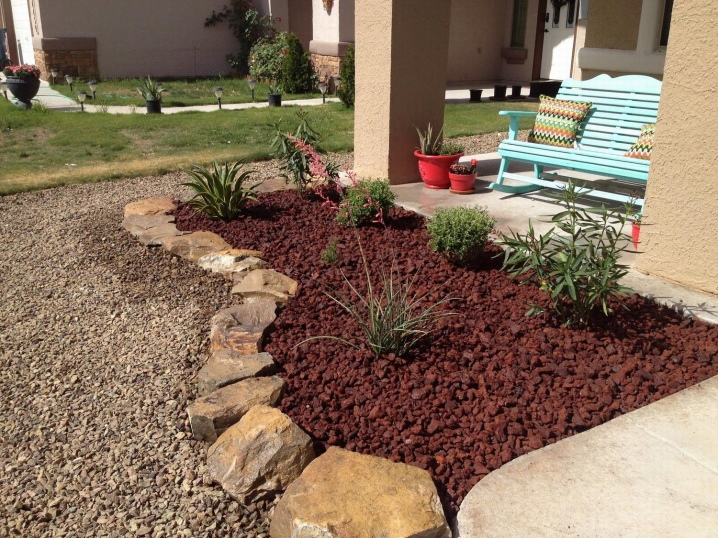







































































































The comment was sent successfully.